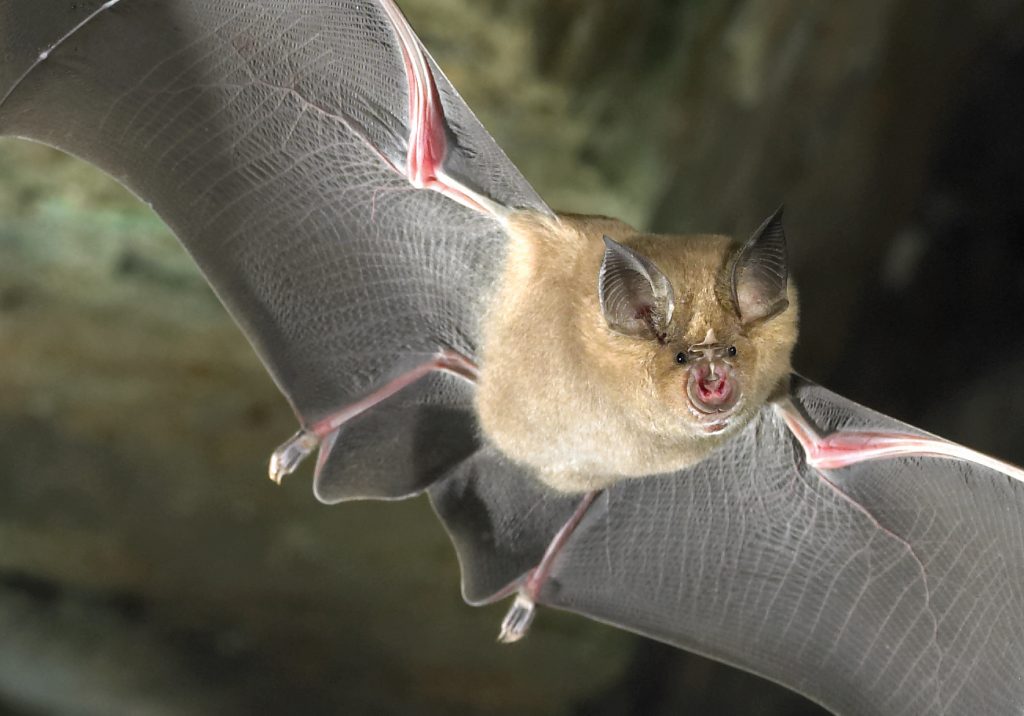Science
Related: About this forumHow scientists found an African bat lost to science for 40 years
Now the first recording of the Hill’s horseshoe bat’s echolocation call may help find more
By Anna Gibbs
51 SECONDS AGO
Julius Nziza still remembers the moment vividly. Just before dawn on a chilly January morning in 2019, he and his team gently extracted a tiny brown bat from a net purposely strung to catch the nocturnal fliers. A moment later, the researchers’ whoops and hollers pierced the heavy mist blanketing Rwanda’s Nyungwe National Park. The team had just laid eyes on a Hill’s horseshoe bat (Rhinolophus hilli), which scientists hadn’t seen for nearly four decades.
Nziza, a wildlife veterinarian at Gorilla Doctors in Musanze, Rwanda, and a self-described “bat champion,” had been looking for the critically endangered R. hilli since 2013. For several years, Nziza and Paul Webala from Maasai Mara University in Narok, Kenya, with the help of Nyungwe park rangers, surveyed the forest for spots where the bats might frequent. They didn’t find R. hilli, but it helped them narrow where to keep looking.
In 2019, the team decided to concentrate on roughly four square kilometers in a high-elevation region of the forest where R. hilli had last been spotted in 1981. Accompanied by an international team of researchers, Nziza and Webala set out for a 10-day expedition in search of the elusive bat. It wasn’t rainy season yet, but the weather was already starting to turn. “It was very, very, very cold,” Nziza recalls.
Every night, from sunset until close to midnight, the researchers stretched nets across trails, where bats are most likely to fly, and kept watch. Then, after a few hours of rest, they woke early to check the traps again. It was cold enough that the bats could die if stuck too long.
More:
https://www.sciencenews.org/article/bat-africa-lost-found-echolocation-hills-horseshoe
~ ~ ~
Rwanda: Critically Endangered Bat Rediscovered in Nyungwe After 40 Years
By Patrick Nzabonimpa
The Hill's horseshoe bat, a critically endangered species, not seen in 40 years, was found again in Nyungwe National Park, a highly bio diverse area containing old-growth cloud forest.
The bat was rediscovered by a multi-national team of experts led by Bat Conservation International (BCI), Rwanda Development Board (RDB), and the Rwanda Wildlife Conservation Association (RWCA).
The rediscovery marked the culmination of survey efforts that took place in Nyungwe National Park and surrounding areas from 2013-2020.
According to the records published by BCI through the Global Biodiversity Information Facility (GBIF), bat species occurrence records resulting from survey data were collected as part of a long-term collaborative project to determine if the International Union for Conservation of Nature IUCN critically endangered Hill's horseshoe bat (Rhinolophus hilli) is extant.
More:
https://allafrica.com/stories/202203110182.html

rampartc
(5,387 posts)bet he tastes like chicken.